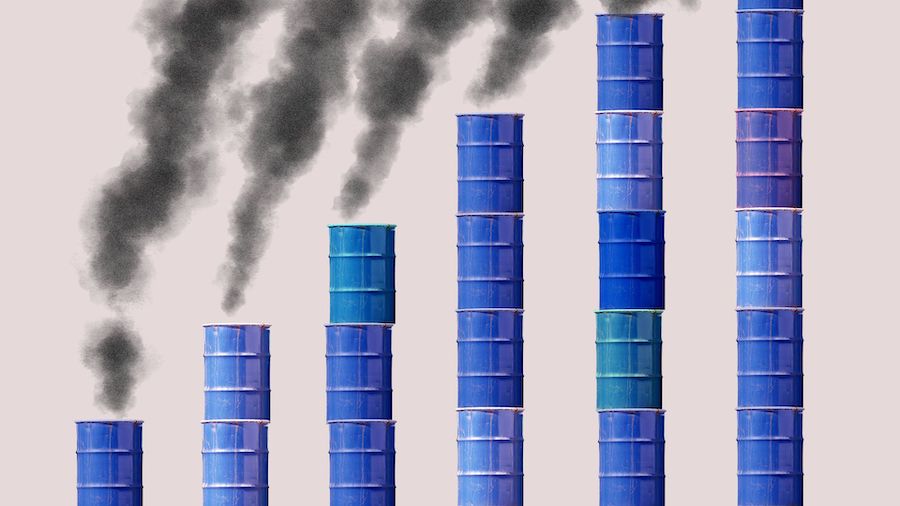The shale boom's spillover emissions

Speaking of climate, the Gulf Coast industrial facilities built to use surging oil and natural gas production from shale formations could become a very large source of greenhouse gas emissions, a peer-reviewed study concludes.
Why it matters: The paper in Environmental Research Letters bolsters understanding of shale's potential climate effects by looking closely at petrochemical plants, LNG terminals and other facilities (much of it in the planning stages).
What they found: Researchers with the University of Texas-Austin estimate that total annual emissions from the infrastructure build-out could reach 541 million tons of carbon dioxide-equivalent (CO2e) by 2030.
- That's more than 8% of total U.S. emissions in 2017 and "roughly equivalent to the emissions of 131 coal-fired power plants."
- The study explores infrastructure in Texas and Louisiana as well as emissions from oil-and-gas production sites.
The intrigue: They note that while emissions from methane released or burned at well sites gets lots of attention, the bigger problem lies elsewhere.
- "A substantial fraction of the projected emissions come from petrochemical facilities (38%) and liquefied natural gas terminals (19%)," it states.
But, but, but: There's a whole bunch of caveats worth keeping in mind here! Among them...
- Most of the emissions come from projects in the planning stages, so it's hard to say how exactly how many will ultimately be built.
- The study does not address ways that the U.S. gas boom has helped displace coal in electricity production.
What they're saying: Daniel Raimi of the nonpartisan think tank Resources for the Future, who has conducted separate research on shale and climate, calls the paper a "valuable, detailed look" at the topic.
- But he notes that a major limitation, which the authors acknowledge, is that it "does not attempt to define a counterfactual scenario."
- For instance, if an LNG export facility isn't constructed in the U.S., would it be built in Qatar, Russia or Australia instead?
- Even domestically, he notes, a petrochemical plant that isn't built in the paper's Gulf Coast study region might get constructed elsewhere in the United States.
The bottom line: "I would tend to view the author’s estimates of emissions associated with the shale boom as an upper bound," Raimi tells me.

NEWS
Hide Full Index
Show Full Index
View All News